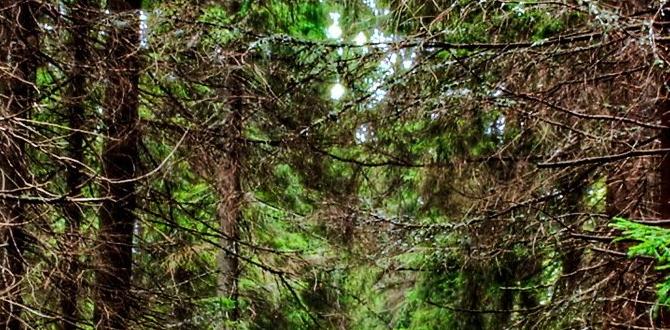Arches National Park nightlife is all about the stars! Forget crowded bars; think breathtaking stargazing, quiet hikes under the Milky Way, and the serene beauty of the desert after dark. This guide is for those seeking peaceful, awe-inspiring experiences, not a party scene. We’ll show you how to make the most of Arches when the sun goes down.
Welcome, fellow explorers! Planning a trip to Arches National Park is exciting, and you might be wondering what to do once daylight fades. Many national parks are quiet after sunset, and Arches is no exception. It’s not a place for loud music or bustling clubs, and that’s part of its magic!
This guide is designed to help you embrace the tranquility and wonder of Arches National Park after dark, focusing on experiences that offer peace, beauty, and unforgettable memories. Whether you’re a seasoned traveler or just starting your park adventures, we’ll walk you through everything you need to know to enjoy the night. Get ready to discover a whole new side of Arches.
Why Arches National Park Excels at Nightlife (for the Quiet Soul)
Arches National Park truly shines after the sun sets, offering a unique form of “nightlife” centered around natural wonders. Unlike bustling cities, Arches provides an experience of profound peace and incredible celestial displays. The park’s remote location, far from major light pollution, makes it an exceptional destination for stargazing. The vast, dark skies reveal a universe of stars, planets, and even the faint band of the Milky Way, which can be a truly humbling sight.
This type of “nightlife” is perfect for those who appreciate nature, quiet contemplation, and a connection to the cosmos. It’s about experiencing the raw, untamed beauty of the high desert under the cloak of night. The silence, punctuated only by the gentle sounds of the desert, allows for a deep sense of relaxation and wonder. If you’re looking for a place to recharge your spirit and marvel at the universe, Arches after dark is an unparalleled choice.
The Star Attraction: Stargazing in Arches
Arches National Park is renowned as an International Dark Sky Park by the International Dark-Sky Association (IDA). This designation means the park has made significant efforts to preserve its dark night skies, making it one of the best places in the world to observe the stars. The lack of artificial light pollution allows for incredibly clear views of celestial objects. On a moonless night, you can expect to see thousands of stars, nebulae, and the prominent arc of the Milky Way.
To make the most of your stargazing experience in Arches, consider these essential tips:
- Timing is Key: Visit during the new moon phase for the darkest skies. Check a moon phase calendar beforehand. Clear skies are also crucial, so monitor weather forecasts.
- Location, Location, Location: While you can stargaze from almost anywhere in the park, some spots offer wider, unobstructed views. Pull-offs along the scenic drive, large open areas like Park Avenue or La Sal Mountains Viewpoint, and even quieter overlooks can be excellent choices.
- Allow Your Eyes to Adjust: It takes about 20-30 minutes for your eyes to fully adapt to the dark. Avoid using bright white lights, including phone screens, during this time.
- Red Light is Your Friend: If you need light, use a red-filtered flashlight or a headlamp with a red light setting. Red light affects your night vision less than white light.
- Bring Comforts: It can get chilly in the desert at night. Pack warm layers, blankets, and perhaps a comfy chair or picnic blanket.
Essential Gear for Stargazing
To enhance your stargazing adventure and ensure comfort, pack these items:
| Item | Purpose | Notes |
|---|---|---|
| Warm Layers (jacket, hat, gloves) | Prevent discomfort from dropping temperatures. | Desert nights can be surprisingly cold, even in summer. |
| Blanket or Camp Chairs | For comfortable viewing while lying down or sitting. | Durable for desert terrain. |
| Red-Filtered Flashlight | Allows visibility without ruining night vision. | Essential for navigating and reading maps. |
| Star Chart or App | Identify constellations, planets, and satellites. | Download apps like SkyView Lite or Stellarium before you go. |
| Camera and Tripod | Capture stunning astrophotography. | Long exposures require a stable tripod. Practice settings beforehand. |
| Water and Snacks | Stay hydrated and energized during your vigil. | No services are available after dark. |
Night Hiking: A Different Perspective
Hiking in Arches after dark is an experience that transforms familiar landscapes into something mystical. Trails that were bustling with people during the day become quiet passages through ancient rock formations. The sounds of the desert, the feel of the cooler air, and the silhouettes of the arches against the starry sky offer a profound connection to nature. However, night hiking requires careful preparation and a heightened sense of awareness for safety.
Popular Trails for Night Hiking (with Caution)
While it’s possible to hike many trails at night, some are more suitable due to their terrain and open spaces. Always remember that trails can be harder to follow in the dark, and you will need to rely heavily on your navigation skills and headlamp.
- Windows Loop Trail: This relatively flat and well-defined trail leads to the North and South Window arches and Turret Arch. The openness of the area can make navigation easier, and the arches themselves are spectacular under moonlight or starlight.
- Delicate Arch Viewpoints: Hiking to the lower or upper viewpoints of Delicate Arch is feasible at night. The trail to the upper viewpoint involves some slickrock scrambling and can be challenging in the dark, but the reward of seeing Delicate Arch against a dark sky is immense. Stick to marked paths and go with someone experienced.
- Landscape Arch Trail (Devils Garden): The beginning of the Devils Garden Primitive Loop to Landscape Arch is fairly flat and wide. Beyond this point, the trail becomes more technical and exposed, making it less advisable for novice night hikers.
Night Hiking Safety: Your Top Priority
Safety is paramount when hiking at night. Arches is a wilderness area, and conditions can change quickly. Here’s what you need to keep in mind:
- Inform Someone: Always tell a friend or family member your hiking plans, including your intended trail and expected return time.
- Carry Essential Gear: A reliable headlamp with extra batteries is non-negotiable. Carry more water than you think you’ll need, a first-aid kit, and navigation tools (map, compass, or GPS device/app). Ensure your phone is fully charged.
- Stay on Marked Trails: It’s easy to get disoriented in the dark. Never stray from marked paths, especially on slickrock where cairns can be difficult to spot.
- Be Aware of Your Surroundings: Watch out for uneven terrain, drop-offs, and wildlife. Animals can be more active at dawn and dusk, and sometimes at night.
- Consider a Guided Tour: If you’re new to night hiking or Arches, consider joining a guided tour. Local outfitters often offer night hikes led by experienced guides who know the terrain and the best spots.
Photography Under the Stars: Capturing the Arches’ Majesty
Arches National Park offers incredible opportunities for photographers who want to capture the unique beauty of its rock formations against the backdrop of a starry sky. Astrophotography, the practice of photographing celestial objects, is particularly rewarding here due to the dark skies. But even casual photographers can capture stunning images with a bit of planning.
Best Spots for Night Photography
Certain viewpoints enhance the photographic experience at night. Consider these locations:
- The Windows Section: The large arches provide natural frames for the night sky. South Window, in particular, offers a dramatic foreground.
- Delicate Arch Viewpoints: Seeing Delicate Arch silhouetted against the Milky Way is a bucket-list shot for many photographers. The upper viewpoint offers an intimate perspective, while the lower viewpoint provides a wider landscape.
- Park Avenue: The towering fins of rock create a majestic, almost cathedral-like setting for night photography. The wide, flat clearing at the overlook offers good space.
- Balanced Rock: This iconic formation is easily accessible and makes for striking compositions with the night sky.
Photography Tips for Night Shoots
Capturing good night photos involves adjusting your camera settings and technique. Even smartphone cameras can do surprisingly well with the right approach:
Camera Settings (for DSLRs/Mirrorless):
- Aperture: Use the widest aperture your lens offers (lowest f-number, e.g., f/2.8) to let in as much light as possible.
- Shutter Speed: Experiment with exposures from 15 to 30 seconds. Longer exposures can capture more light but may result in star trails if the Earth’s rotation becomes visible. Check out resources from DPReview for astrophotography tips.
- ISO: Start around ISO 1600-3200 and adjust higher if needed, but be mindful of noise. Modern cameras handle higher ISOs better.
- Focus: Manually focus to infinity. It’s often best to do this during the day on a distant object, then tape the focus ring into place, or use live view to magnify and focus precisely on a bright star or the moon.
Smartphone Photography:
- Use your phone’s “Night Mode” or “Pro Mode” if available. These modes often allow you to adjust exposure settings.
- A tripod is just as crucial for smartphones as for larger cameras to keep the phone perfectly still during long exposures.
- Look for apps that offer advanced camera controls for smartphones.
General Tips:
- Use a Tripod: Absolutely essential for sharp, clear night photographs. A sturdy tripod prevents camera shake during long exposures.
- Remote Shutter or Timer: Use your camera’s self-timer (2-second or 10-second delay) or a remote shutter release to avoid camera shake when pressing the shutter button.
- Composition: Think about how the arch or rock formation will frame the sky. Look for interesting foreground elements.
- Patience: Night photography requires patience for setting up, capturing shots, and waiting for ideal conditions.
Dark Sky Etiquette: Protecting the Arches’ Night Sky
Being an International Dark Sky Park means the park community has a responsibility to protect the night sky for everyone. While Arches doesn’t have specific noise ordinances for “nightlife” in the traditional sense, adhering to general park rules and being mindful of others is crucial for preserving the tranquil experience. This is especially important when enjoying the quiet beauty of the desert after dark.
Key Etiquette Guidelines
- Light Discipline: As mentioned, use lights sparingly and always opt for red light when possible. This helps minimize disturbance to wildlife and other visitors’ night vision.






